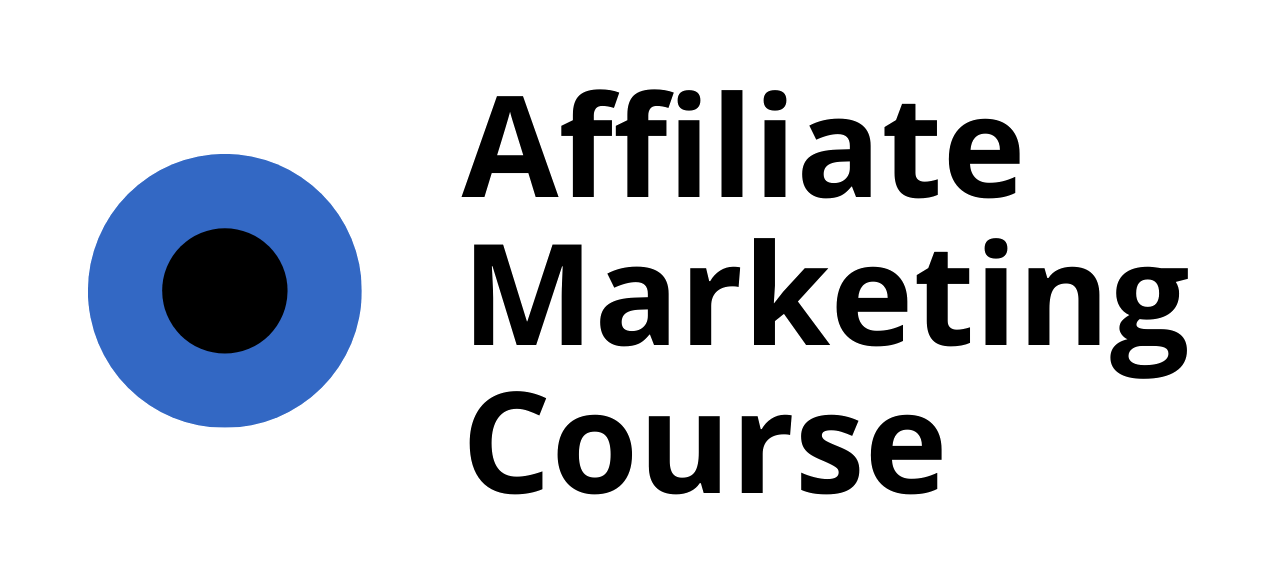Looking to elevate your affiliate marketing efforts? Imagine harnessing the power of free video content generators to create engaging, high-quality material that resonates with your audience. In today’s digital landscape, video content has become a cornerstone of successful affiliate marketing campaigns, offering unparalleled opportunities for engagement and conversion. Whether you’re just starting out or looking to refine your strategy, this article dives into the ins and outs of leveraging free tools to craft compelling affiliate marketing video content. From exploring the best practices for creating effective videos to discovering how to maximize your earnings through affiliate marketing, we’ve got you covered. Join us as we unravel the secrets to turning your affiliate marketing efforts into a thriving online business. Ready to take your affiliate marketing game to the next level? Let’s get started!
Key Takeaways
– Video Content Isn’t Required but Can Boost Affiliate Marketing Success: While affiliate marketing doesn’t mandate video creation, incorporating free video generators can enhance engagement and attract visual learners.
– Affiliate Marketing Income Potential Varies Widely: From $25–$150/month for newcomers to $10,000+ for experienced marketers, income depends on niche, traffic, and strategy.
– Comply with Legal Requirements for Ethical Affiliate Marketing: Always disclose relationships, avoid false claims, and steer clear of spammy tactics to stay compliant with laws like FTC regulations.

Best Content Types for Affiliate Marketing
Creating engaging and high-quality content is the cornerstone of a successful affiliate marketing strategy. Below are the most effective types of content to attract, engage, and convert your audience:
- Educational Content: – Blog posts, articles, and guides that provide value and solve problems for your audience. – Example: “How to Start Affiliate Marketing: A Step-by-Step Guide” – This type of content builds trust and positions you as an expert in your niche.
- Product Reviews and Comparisons: – In-depth reviews of products, services, or tools relevant to your audience. – Example: “Top 10 Tools Every Affiliate Marketer Needs in 2025” – Highlight features, benefits, and potential drawbacks to help readers make informed decisions.
- Case Studies and Success Stories: – Share real-life examples of how others have achieved success with affiliate marketing. – Example: “How One Entrepreneur Grew Their Business Using Affiliate Marketing” – Social proof can significantly boost credibility and inspire action.
- Video Content: – Videos, whether live streams, tutorials, or product demonstrations, are highly engaging. – Example: “Affiliate Marketing Tips You Can Implement Today” – Visual content helps in conveying complex concepts quickly and effectively.
- Infographics and Charts: – Visual representations of data, trends, or statistics can make information more accessible. – Example: “The Evolution of Affiliate Marketing Over the Years” – These are shareable and can drive traffic organically.
Key Tips for Creating Effective Affiliate Content
To maximize the impact of your affiliate content, keep these tips in mind:
- Focus on Your Audience: – Create content that addresses the specific needs and interests of your target audience.
- Use a Clear Call-to-Action (CTA): – Whether it’s to sign up for a newsletter, visit a landing page, or purchase a product, make your CTA obvious.
- Optimize for SEO: – Use relevant keywords, meta descriptions, and alt texts to improve search engine visibility.
- Include Internal Links: – Link to other relevant pages on your site to keep readers engaged and improve SEO performance.
By leveraging these content types and tips, you can create a robust affiliate marketing strategy that drives results and builds long-term relationships with your audience.
Can You Make $100 a Day with Affiliate Marketing?
Yes, it is possible to earn $100 a day through affiliate marketing with consistent effort and the right strategies. Below are proven methods to achieve this goal:
1. Understand the Basics of Affiliate Marketing
Affiliate marketing involves promoting products or services and earning a commission for each sale made through your unique referral link. To succeed, you need to choose the right affiliate programs, drive targeted traffic, and convert that traffic into sales.
2. Key Strategies to Earn $100 Daily
a. Build a Strong Traffic Source
- Social Media Platforms : Promote affiliate links on platforms like Instagram, Pinterest, and TikTok where visual content performs well.
- Email Marketing : Build an email list and send regular newsletters with affiliate offers.
- Content Creation : Create valuable content around trending topics in your niche to attract organic traffic.
b. Choose the Right Affiliate Programs
- High-Commission Programs : Look for affiliate networks offering competitive commissions, such as Amazon Associates, ClickBank, and ShareASale.
- Niche-Specific Programs : Join programs tailored to your audience’s interests to maximize conversion rates.
c. Optimize Your Landing Pages
- Clear Call-to-Actions : Use persuasive CTAs like “Get Started Now” or “Shop Today.”
- Trust Signals : Include trust badges and reviews to build credibility.
- Mobile Optimization : Ensure your landing pages are mobile-friendly since many users shop on their phones.
d. Leverage Social Proof
- Customer Testimonials : Showcase real customer reviews and success stories to build trust.
- Influencer Partnerships : Collaborate with influencers in your niche to reach a broader audience.
e. Use Paid Advertising
- Google Ads : Target high-intent keywords to drive traffic to your affiliate links.
- Facebook Ads : Create targeted campaigns based on demographics and interests.
f. Stay Updated with Trends
- SEO Best Practices : Optimize your content for search engines to increase visibility.
- Trending Topics : Align your content with current trends to capture attention.
3. Tools and Resources
- Affiliate Marketing Courses : Take courses like AffiliateMarketingCourse.biz to master the skills.
- Analytics Tools : Track your performance with tools like Google Analytics and SEMrush to identify areas for improvement.
By implementing these strategies and continuously refining your approach, you can consistently earn $100 a day or more through affiliate marketing.

How to Create Videos for Affiliate Marketing
Creating high-quality videos for affiliate marketing requires careful planning and execution. Below is a step-by-step guide to help you create impactful video content that drives traffic and converts viewers into customers.
1. Choose Your Niche and Target Audience
Start by selecting a specific niche within affiliate marketing that aligns with your expertise or interests. Define your target audience, including demographics, interests, and pain points, to tailor your content effectively.
2. Tools You’ll Need
- Video Creation Software: Tools like Canva, Adobe Premiere Pro, or Wistia can help you create professional-looking videos without advanced editing skills.
- Microphone and Audio Equipment: Clear audio is crucial. Invest in a good microphone and ensure your surroundings are quiet during recording.
- Video Hosting Platform: Upload your videos to platforms like YouTube or Wistia to host and share them with your audience.
3. Plan Your Video Content
Before diving into production, plan your content. Consider the following:
- Script Outline: Write a clear and concise script that includes an introduction, detailed product demonstration, benefits, and a call-to-action (CTA).
- Visual Organization: Prepare visuals such as product images, screenshots, or diagrams to support your narrative.
- Narrative Structure: Ensure your video tells a story that engages viewers emotionally and keeps them interested throughout.
4. Record and Edit Your Video
Once you’re ready, record your video in a quiet environment with good lighting. After recording, edit your video to ensure it’s polished and free of errors. Key editing tasks include:
- Clipping and Trimming: Remove unnecessary parts of the video to keep it concise.
- Audio Enhancement: Adjust the volume levels, add background music, or narration to improve sound quality.
- Visual Enhancements: Add transitions, text overlays, or watermarks to make your video visually appealing.
5. Optimize Your Video Content
To maximize visibility, optimize your video content using the following techniques:
- Keyword Optimization: Include relevant keywords in your video title, description, and tags to improve search engine ranking.
- High-Quality Visuals: Use clear and professional images to convey your message effectively.
- Engaging Thumbnails: Create eye-catching thumbnails that reflect the content of your video to encourage clicks.
6. Promote Your Video
After publishing your video, take proactive steps to promote it:
- Share on Social Media: Post your video on platforms like Instagram, Facebook, Twitter, and LinkedIn to reach a broader audience.
- Email Marketing: Include a link to your video in your newsletter or promotional emails.
- Collaborate with Influencers: Partner with influencers in your niche to promote your video to their audience.
7. Track Performance and Analyze Results
Monitor how your video performs through analytics tools like YouTube Analytics or built-in trackers. Pay attention to metrics such as views, watch time, and click-through rates to gauge success and refine future content.
8. Stay Updated on Trends
Keep an eye on the latest trends in video marketing to stay competitive. Follow industry blogs, attend webinars, and experiment with new formats like live streaming or unscripted content.
9. Avoid Common Mistakes
Finally, avoid common pitfalls such as poor audio quality, neglecting SEO, or failing to engage viewers early in your video. These mistakes can harm your credibility and reduce viewer retention.

Do You Have to Make Videos for Affiliate Marketing?
No, you do not have to make videos for affiliate marketing. While video content can be an effective strategy, it is not a necessity. Many successful affiliate marketers rely on written content, blog posts, social media, or email marketing to drive traffic and conversions.
However, creating videos can enhance your affiliate marketing efforts by:
- Increasing engagement and watch time.
- Providing a visual representation of products or services.
- Improving your chances of ranking for featured snippets in search engines.
- Appealing to audiences who prefer visual content.
Whether you choose to use videos or not depends on your target audience, your niche, and your personal preferences. Some niches may benefit more from video content, while others may thrive with written content alone.
What is the Average Income for Affiliate Marketing?
Affiliate marketing income varies significantly depending on factors like niche, traffic, conversion rates, and marketing strategies. However, many affiliates report earning between $25 – $150 per month for newcomers, while experienced marketers may earn $50 – $200+ or more.
Key factors influencing affiliate marketing income include:
- Niche or Industry: High-ticket niches often yield higher earnings, while competitive industries may require more effort to succeed.
- Traffic and Conversion Rates: Higher traffic and better conversion rates lead to increased revenue.
- Experience and Expertise: Established marketers often earn more due to better strategies and relationships.
- Promotions and Deals: Special offers can boost short-term earnings but may not be sustainable.
- Commission Structures: Programs with higher payout rates can significantly increase income.
Top earners in affiliate marketing can make well over $10,000+ monthly, particularly those promoting high-ticket items or operating multiple profitable campaigns.

Is There Anything Illegal About Affiliate Marketing?
Affiliate marketing is generally legal, but it does come with certain rules and regulations to ensure transparency and fairness. Here’s what you need to know:
- Compliance with Laws :
- In the United States, affiliate marketing falls under the jurisdiction of the Federal Trade Commission (FTC). The FTC requires that affiliate marketing programs disclose relationships between advertisers and affiliates to prevent deceptive practices. Failure to comply can result in penalties, including fines and legal action.
- No False Claims :
- One common illegal practice in affiliate marketing is making false or misleading claims about products or services. Promoting something as “free” when it actually requires payment, or claiming a product cures a disease without medical proof, can lead to legal issues.
- Disclosure Requirements :
- Affiliates must clearly disclose their relationships with brands. This can be done through statements like “ponsored content,” “affiliate links,” or “as an Amazon Associate, I earn commissions.” Failing to disclose can violate FTC regulations.
- Avoid Spammy Tactics :
- Sending unsolicited emails, using misleading subject lines, or engaging in aggressive sales tactics can be considered spamming, which is against the law in many jurisdictions.
- State Laws :
- Some U.S. states have their own laws governing marketing practices, which may impose additional restrictions beyond the FTC rules.
To stay compliant, always: – Clearly disclose your affiliate relationship with consumers. – Use affiliate links appropriately and avoid spammy behavior. – Monitor your content for accuracy and legality. – Stay informed about updates to FTC guidelines and other relevant regulations.
By following these guidelines, you can engage in affiliate marketing legally and ethically while providing value to your audience.
For more information on affiliate marketing, visit our comprehensive guide .




0 Comments